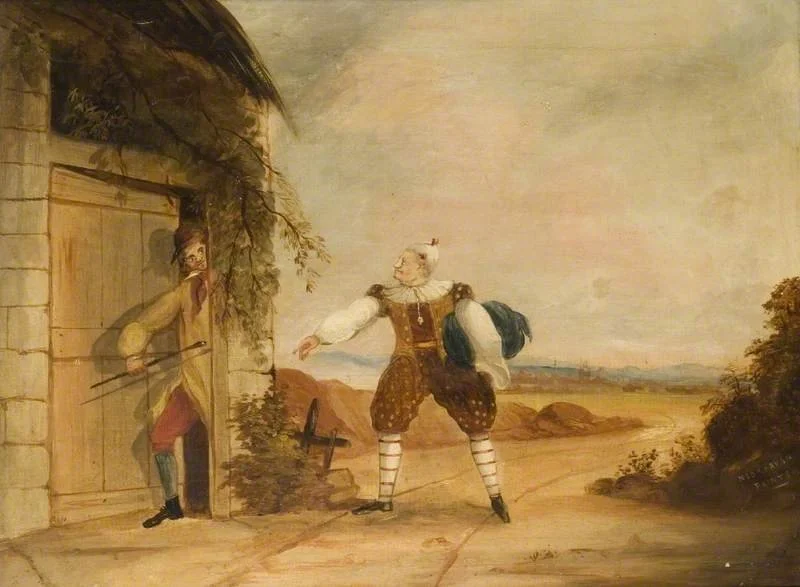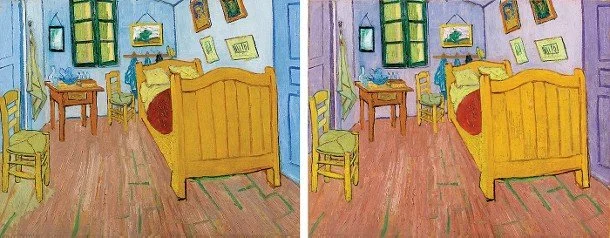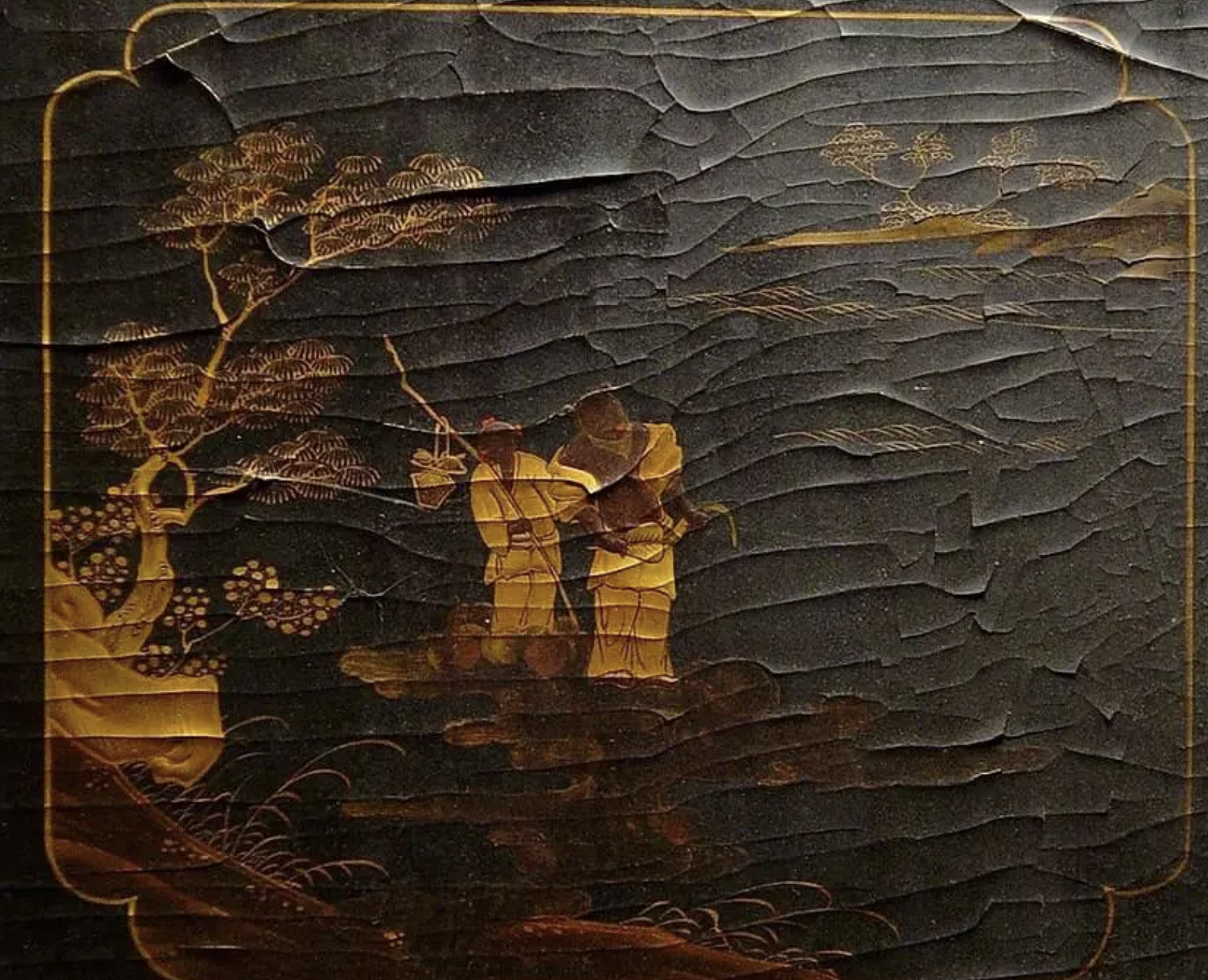The 10 Agents of Deterioration
Easel paintings, as complex composite structures, are vulnerable to various forms of degradation. The concept of the Ten Agents of Deterioration was first introduced in the 1990s by the Canadian Conservation Institute (CCI) and has since become a foundational framework in preventive conservation. Each agent represents a specific threat that can cause physical, chemical, or biological damage to paintings over time. This topic was brought up during my induction onto the Conservation of Easel Paintings MA course - and though I was was already somewhat familiar with them, I figured it was a good opportunity to revisit the topic and write about it. This article isn’t meant to be an exhaustive exploration, but rather an overview of how these agents apply specifically to easel paintings and their conservation, providing insight into their impact and the strategies conservators use to mitigate them.
1. Physical Forces
Image depicting physical damage to painting, from © Government of Canada, Canadian Conservation Institute. CCI 129472-0023
Physical forces refer to any mechanical stresses that may cause direct physical damage to a painting. This includes mishandling, accidental impact, vibrations, and more extreme events such as earthquakes. For easel paintings, these forces can result in the cracking or flaking of paint, deformation of the support (e.g., canvas or wooden panel), and even structural damage to the frame.
Conservation practices aim to prevent these risks through proper handling, protective storage, and shock-absorbing systems, especially during transport or display.
2. Thieves, Vandals, and Displacers
Ned Corvan, Billy Purvis Stealing the Bundle. bequeathed by A. J. Fenwick, 1963. Oil on Canvas. Image credit: Laing Art Gallery.
While often overlooked in discussions of environmental degradation, human actions can be just as damaging to paintings. Theft and vandalism pose significant risks, particularly in public collections. Opportunistic theft or deliberate acts of vandalism can lead to the complete loss or severe damage to artwork. Additionally, the improper relocation of paintings without adequate documentation (displacement) results in the loss of context and provenance.
Security measures, such as alarms, surveillance, and thorough collection management practices, are critical to mitigating these risks.
3. Fire
Image depicting oil painting subject to fire and smoke damage before restoration (left) and after (right), image from Fine art Restoration Co.
Fire can cause catastrophic and irreversible damage to paintings. Not only can flames directly consume a painting, but the heat can also warp and distort canvases and wooden panels. Additionally, soot and smoke from fires can coat paintings, obscuring details and chemically altering the paint and varnish layers.
Preventive measures, such as fireproof storage, fire suppression systems, and emergency response plans, are essential in protecting collections from this devastating agent.
4. Water
Image depicting Water Damage, Taken from Fine Art Restoration Co.
Water is a common cause of degradation in easel paintings, often resulting from floods, leaks, or high humidity. Direct exposure to water can lead to staining, warping, and flaking of the paint layer, while excessive humidity can cause swelling and deformation of the canvas or support. Wooden panels are particularly susceptible to warping.
In addition to maintaining stable environmental conditions, conservators must be prepared to address emergency situations, such as floods or burst pipes, to prevent long-term damage.
5. Pests
Pest Damage - Woodworm, Image by Fine Art Restoration.
Biological pests, including insects and rodents, are a significant threat to easel paintings. Insects like wood-boring beetles or moths can eat through canvas and wooden supports, while rodents may gnaw on frames. Mould, classified under pests by some, thrives in high humidity and can cause staining, surface deterioration, and degradation of organic materials.
Preventive conservation includes regular monitoring for signs of infestation, environmental controls to deter pests, and treatments such as freezing or fumigation when infestations are discovered.
6. Pollutants
Airborne pollutants, both particulate and gaseous, contribute to the deterioration of paintings. Dust and other particulates can accumulate on the surface, leading to abrasion during cleaning. Gaseous pollutants like sulfur dioxide or ozone cause chemical reactions with the paint and varnish, leading to discoloration and degradation.
Museums often employ air filtration systems to reduce pollutant exposure, and protective glazing may be used to shield paintings from direct contact with harmful particles.
7. Light (Visible and Ultraviolet)
Pigment Degradation in Van Gogh’s ‘The Bedroom’, Image from c&en.
Light exposure, particularly ultraviolet (UV) radiation, is a significant agent of deterioration for easel paintings. UV light causes photochemical reactions that break down organic materials, leading to the fading of pigments and the yellowing of varnishes. Even visible light, over prolonged periods, contributes to the degradation of delicate pigments.
Conservation efforts focus on limiting light exposure by using UV-filtered lighting, reducing overall light intensity, and rotating artworks in and out of display to minimize cumulative exposure.
8. Temperature
Incorrect temperature can have both immediate and long-term effects on easel paintings. High temperatures accelerate chemical degradation processes, while low temperatures can make certain materials more brittle and prone to cracking. Fluctuations in temperature are particularly harmful, as they cause expansion and contraction of materials, potentially leading to structural damage in the paint and support layers.
Maintaining a stable temperature within the recommended range (typically 18-22°C) is crucial in both display and storage environments.
9. Relative Humidity
Craquelure due to humidity damage, Image from Lowy.
Relative humidity (RH) is a critical factor in the preservation of easel paintings. Organic materials in paintings, such as canvas, wood, and paint binders, absorb and release moisture in response to the surrounding air's humidity. Large or frequent fluctuations in RH can cause swelling, contraction, and warping, leading to cracks in the paint layer or distortion of the support.
A stable RH between 40-60% is generally recommended, and many institutions invest in climate control systems to ensure such conditions are met.
10. Custodial Neglect & Dissociation
Neglect and dissociation refer to the lack of proper care or attention to an artwork's condition and provenance. Custodial neglect occurs when routine conservation or preventive care is not performed, allowing damage to accumulate over time. Dissociation involves the loss of important records or information related to a painting, such as its provenance, treatment history, or display context. This type of degradation is often administrative but can have severe consequences for the painting's cultural and historical value.
Regular documentation, conservation assessments, and proper storage and display conditions help prevent this form of degradation.
Conclusion
In conclusion, the Ten Agents of Deterioration provide a valuable framework for understanding the risks that easel paintings face and the measures necessary to protect them. While the specific threats may vary depending on the painting's materials, environment, and context, the overarching principles of preventive conservation remain essential to the long-term preservation of these works. As this article highlights, the careful balance of environmental control, security, and routine maintenance forms the cornerstone of conservation efforts. By remaining vigilant and continually adapting strategies to mitigate these agents, conservators can help safeguard our cultural heritage for future generations.







